| |
|
Xiamen Oil Paintings, Wholesale Direct!
|
|
100% hand painted, 100% cotton canvas, 100% money back if not satisfaction. |
|
|
|
|
ART WORKS INDEX
A
B
C
D
E
F
G
H
I
J
K
L
M
N
O
P
Q
R
S
T
U
V
W
X
Y
Z
|
|
ARTISTS INDEX
A
B
C
D
E
F
G
H
I
J
K
L
M
N
O
P
Q
R
S
T
U
V
W
X
Y
Z
|
|
|
|
|
|
 |
FOSCHI, Pier Francesco
|
|
Italian painter, Florentine school (b. 1502, Firenze, d. 1567, Firenze)
was an Italian painter active in Florence in a Mannerist style. He was pupil of Andrea del Sarto and assisted Pontormo with his frescoes at Careggi in 1536. He completed 3 altarpieces, commissioned in 1540C1545 for the church of Santo Spirito in Florence: an Immaculate Conception, Resurrection , and a Transfiguration. Foschi was also influenced by and Il Bronzino. One of his pupils was Alessandro Fei. Also called Pier Francesco di Jacopo Foschi or Toschi. He was the son of Pierfrancesco di Jacopo Sandro Foschi, known for his Madonna and Child with the Infant Saint John. (Utah Museum of Fine Arts). Foschi is best noted for his portraits painted between 1530 and 1540, including his Portrait of a Lady (Museo Thyssen-Bornemisza), Portrait of a Young Man Weaving a Wreath of Flowers (Utah Museum of Fine Arts), and his Portrait of a Man, (Uffizi Gallery). In his portraits he adhered to Mannerist style, utilizing a slight Contrapposto in the sitter with their head turned from the body. This pose gave the depiction a spontaneity and sense of movement for the innovative Mannerists, but was eventually so formulaic that it lost its intention of originality.
|
|
|
|
|
|
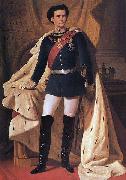 |
Ferdinand von Piloty
|
|
painted King Ludwig II of Bavaria in generals' uniform and coronation robe in 1865
|
|
 |
FARINATI, Paolo
|
|
Italian painter, Veronese school (b. 1524, Verona, d. 1606, Verona)
Italian painter and draughtsman. He was the son of a painter, Giambattista, but probably trained in the workshop of Nicola Giolfino (Vasari). His earliest documented painting, St Martin and the Beggar (1552; Mantua Cathedral), was commissioned by Cardinal Ercole Gonzaga along with works by Battista dell'Angolo del Moro, Veronese and Domenico Brusasorci for Mantua Cathedral, newly restored by Giulio Romano. As is evident in his chiaroscuro and figure types, Farinati had absorbed certain Mannerist influences from the frescoes of scenes from the Life of the Virgin (1534) in the choir of Verona Cathedral, executed by Francesco Torbido to Giulio's design. Giolfino's eccentric style would also have encouraged Farinati to emphasize line over colour and to restrict his palette to rather opaque greys, browns, mauve and rust. His two-canvas Massacre of the Innocents (1556; Verona, S Maria in Organo) displays the muscular figures, sharp foreshortenings and posed attitudes of Mannerism and has a more polished finish than his earlier work. Its strong, plastic qualities are also evident in Christ Walking on the Water and the Supper of St Gregory (1558) in the choir of the same church.
|
|
 |
Fanny Palmer
|
|
One of the premier artists and stone lithographers .
American , 1812-1876
|
|
|
|
|
|
 |
Eunice Pinney
|
|
American Folk Artist, 1770-1849
She was a self-taught artist who, from about 1809 to 1826, devoted part of her time to producing a wide range of subjects in watercolour: landscape, genre, historical, biblical, allegorical and literary. Her distinctive style is solid and robust, with a strong sense of contrast and design. Problems in creating realistic form are apparent: faces are largely expressionless, and figures are stocky and two-dimensional. However, these difficulties are compensated for by fresh vigorous colour, bold pattern, artful composition and varied subject-matter. Pinney displayed the primitive artist's tendency to borrow and model from the best sources at hand: The Cotter's Saturday Night
|
|
|
|
|
|
|
|
 |
Enoch Wood Perry, Jr.
|
|
(1831-1915) was a painter from the United States.
Perry was born in Boston on July 31, 1831. His father was Enoch Wood Perry, and mother was Hannah Knapp Dole. His maternal grandparents were Samuel Dole and Katherine Wigglesworth. The family moved to New Orleans with his family as a teenager in 1848 and attended its public schools. After working several years as a clerk in a commission house, Perry began formal art education. In 1852 he went to Europe for four years and studied with Emanuel Leutze at the Desseldorf Academy, Thomas Couture in Paris, and in Rome.Perry served as the U.S. Consul to Venice between 1856 and 1858. Upon returning to America, he opened a studio in Philadelphia.
|
|
|
|
|
|
|
|
|
|
 |
Eilif Peterssen
|
|
1852-1928
was a Norwegian painter. He attended the of Fredrik Eckersberg in Kristiania (now Oslo) in 1866 and 1870. After that, he studied painting briefly with Knud Bergslien at the Johan Fredrick Eckersberg School of Painting and left to go abroad in 1871. He studied at the School of Art of Copenhagen; in Karlsruhe (1871?C1873), where he was a student of Hans Gude; and, together with Hans Heyerdahl, in Munich under Wilhelm von Diez. He then studied in London, Paris, and Italy. After these travels, he returned to Norway and settled in Bærum. He made his debut at the Høstutstillingen (Autumn Exposition) in Kristiania in 1882. He was a profound connoisseur of European art and was later associated groups such as Lysaker, the painters of Fleskum and those of Skagenpainters, as well as with individual artists like August Eiebakke, Kitty Kielland and Harald Oskar Sohlberg. In Norway, he is also known as the designer of the coat of arms of Norway, adopted when the country separated from Sweden in 1905 to become an independent country. This version was used for official government purposes until 1937, when it was replaced by a new version. Nonetheless, Peterssen's design is still used for the royal coat of arms and for the royal flag. In addition to his canvasses, he collaborated on the decoration of the Tourist Hotel in Holmenkollen in 1889. In the same year, he painted the murals "The Wanderers of Emmaus" in the Church of Tanum in Bærum and "Jesus in the Garden of Gethsemane" in the Church of the Cross, Bergen.
|
|
 |
Egbert van der Poel
|
|
Egbert van der Poel (Delft, 1621 - Rotterdam, 1664) was a Dutch Golden Age genre and landscape painter, son of a Delft goldsmith.
He may possibly have been a student of Esaias van de Velde and of Aert van der Neer. According to the RKD he was the brother of the painter Adriaen Lievensz van der Poel and a student of Cornelis Saftleven in Rotterdam. Van der Poel was registered with the Guild of St Luke in Delft on October 17, 1650, where he is listed as a landscape painter. In 1651 van der Poel married Aeltgen Willems van Linschooten in Maassluis, near Rotterdam. His most famous paintings depict the Delft gunpowder explosion of October 12, 1654 and its aftermath; he and his wife were living in the area at the time. Egbert and Aeltgen van der Poel had a son and three daughters. He died in Rotterdam in 1664.
|
|
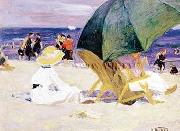 |
Edward Henry Potthast Prints
|
|
American Impressionist Painter, 1857-1927
Edward Henry Potthast (1857 ?C 1927) was an American Impressionist painter.
He was born in Cincinnati, Ohio. From June 10, 1879 to March 9, 1881 he studied with Thomas Satterwhite Noble. He later studied at the Royal Academy in Munich with the American-born instructor Carl Marr. After returning to Cincinnati in 1885 he resumed his studies with Noble. In 1886 he departed for Paris, where he studied with Fernand Cormon. In 1895 he relocated to New York City and remained there until his death in 1927.
|
|
 |
Edvard Petersen
|
|
(4 February 1841 - 5 December 1911) was a Danish painter. He also designed the Stork Fountain on Amagertorv in Copenhagen
From 1851 he attended the Royal Danish Academy of Fine Arts. In the 1860s and 1870s he painted romantic landscape paintings under influence of Vilhelm Kyhn. He was a close friend of fellow painter Theodor Philipsen and together they went on several travels, including two stays in Italy between 1875 and 1880 and a visit to France.The friendship did not seem to influence Petersen's rather conservative style of painting and his works from the times abroad are generally traditional paintings of local life.
In the 1880s Petersen painted a number of figure paintings of street life in Copenhagen under influence of French Realism. His most famous paintings are Emigrants on Larsens Plads (1880) and A Return, the America Liner at Larsens Plads (894).
With his Stork Fountain proposal, Petersen won the competition for the design of a new fountain on Amagertorv in Copenhagen in 1888. The sculptor Vilhelm Bissen moulded the birds and the fountain was inaugurated in 1904
|
|
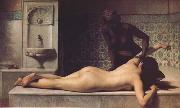 |
Edouard Debat Ponsan
|
|
French Academic Painter, 1847-1913
1847-1913.French painter. He trained in Toulouse and later at the Ecole des Beaux-Arts in Paris under Alexandre Cabanel. In 1873 he won second place in the Prix de Rome and in 1874 the Prix Troyon of the Institut. From the Institut he received a bursary that enabled him to visit Italy. In 1870 he made his debut at the Salon under the name Ponsan-Debat and afterwards exhibited there such genre and history paintings as Jephthah's Daughter (1876; Carcassonne, Mus. B.-A.). He also executed religious works, some of which were for churches and cathedrals: he painted St Paul before the Areopagus (1877) for the church at Courbevoie and the Pity of St Louis for the Dead (1879) for the cathedral at La Rochelle. From 1880 Debat-Ponsan was the name under which he exhibited. The Massage (1883; Toulouse, Mus. Augustins) shows a white female nude massaged by a negress, and the subject attracted comment from contemporary critics. He also painted a number of landscapes, including Corner of the Vineyard (1888; Nantes, Mus. B.-A.). These were painted in a style similar to that of Jules Bastien-Lepage and, when they included figures, were often sentimental. His reputation depended, however, on his portraits, which are distinguished by their vigorous colour and precision, as seen in the portrait of Pouyer-Quertier (c. 1885; Rouen, Mus. B.-A.). Most notable was his portrait of General Boulanger (1887; untraced), which was shown at the Salon of 1887 and was accepted in 1889 for the Exposition Universelle in Paris. Amid scandal, Debat-Ponsan withdrew it soon after the opening because he thought that the Exposition was badly organized and his painting was not shown to advantage. He refused the bronze medal awarded it by the jury. In later years, while producing such paintings as Christ on the Mountain (1889; Toulouse, Mus. Augustins), he increasingly responded to contemporary events in his work.
|
|
 |
Edgar Payne
|
|
American Painter, ca.1882-1947
was an American Impressionist painter best remembered for his impressionist landscapes. Born in Chicago, Illinois, his art education included training at the Art Institute of Chicago (where he enrolled at Saturday classes at the age of 11), the Art Students League of New York, and in the atelier of William Merritt Chase. He spent much of his early career working in Paris, France. He served in the US Army as an aerial photographer during World War I. [1]In 1920 he and his wife relocated to Pasadena, California. He taught fine art at Occidental College, and was director of the Stickney Memorial School of Art in Pasadena.
|
|
 |
E.Phillips Fox
|
|
Australian Naturalist Painter, 1865-1915
Australian painter and teacher. From 1878 to 1886 he trained at the National Gallery of Victoria Art Schools, Melbourne, and in 1887 left to study in Europe. In Paris he attended the Academie Julian and was taught by Jean-Leon Gereme at the Ecole des Beaux-Arts and by the American artist T. Alexander Harrison (1853-1930). He was involved with the plein-air artists at Etaples, Pas-de-Calais, and in Brittany and also visited Giverny, where from 1883 Monet was living. By 1890 he had moved to England, to the artists' colony at St Ives, Cornwall. In 1892 he returned to Melbourne where he chiefly painted portraits and landscapes. He was a member of the Victorian Artists' Society, exhibiting with them between 1892 and 1900. In 1893 he established the lively Melbourne Art School with Tudor St George Tucker (1862-1906). There an academic training coupled with a modified Impressionist technique was taught, as can be seen in Fox's painting the Art Students . In 1901 he left for London, having been commissioned by the Trustees of the National Gallery of Victoria to paint the Landing of Captain Cook at Botany Bay. After his marriage in 1905 to the artist Ethel Carrick, he and his wife settled in Paris and remained there until 1913.
|
|
 |
E. Phillips Fox
|
|
Emanuel Phillips Fox (1865-1915) was an Australian Naturalist painter.
|
|
 |
DUPUYS, Pierre
|
|
French painter (b. 1610, Montfort l'Amaury, d. 1682, Paris).
|
|
|
|
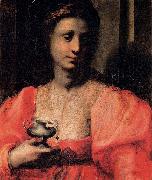 |
Domenico Puligo
|
|
(1492-1527) was an Italian painter of the Renaissance, active in Florence. His real name was Domenico di Bartolommeo Ubaldini.
He was trained by Ridolfo Ghirlandaio, but acquired a style consistent with his contemporary Andrea del Sarto. He painted a Vision of Saint Bernard altarpiece, now in Walters' Gallery in Baltimore. He was also in demand for portraits. He is featured in Giorgio Vasari's Vite or biographies of artists. He excelled as a portrait painter. He befriended Andrea del Sarto ane worked with Ridolfo Ghirlandaio. His brother, Jacone Puligo was also a Renaissance painter.
|
|
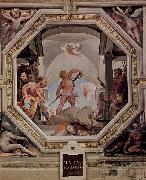 |
Domenico di Pace Beccafumi
|
|
(1486?CMay 18, 1551) was an Italian Renaissance-Mannerist painter active predominantly in Siena. He is considered one of the last undiluted representatives of the Sienese school of painting.
Domenico was born in Montaperti, near Siena, the son of Giacomo di Pace, a peasant who worked on the estate of Lorenzo Beccafumi. Seeing his talent for drawing, Lorenzo adopted him, and commended him to learn painting from Mechero, a lesser Sienese artist. In 1509 he traveled to Rome, but soon returned to Siena, and while the Roman forays of two Sienese artists of roughly his generation (Il Sodoma and Peruzzi) had imbued them with elements of the Umbrian-Florentine Classical style, Beccafumi's style remains, in striking ways, provincial. In Siena, he painted religious pieces for churches and of mythological decorations for private patrons, only mildly influenced by the gestured Mannerist trends dominating the neighboring Florentine school.
|
|
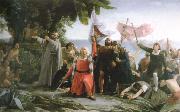 |
dioscoro teofilo puebla tolin
|
|
dioscoro teofilo puebla tolin(1831 to1901),who studied in madrid and rome,worked in the tradition fo historicism,asubgenre of history painting,which focused on the interplay of religious pride,patriotism ,and sntions of glory.tolin s technical style is referred to as eclecticism for its wide ranging,and often superficial ,borrowing from euopean techniques and visual trends. paintings in this genre were often funded by official organizations and art academies,which treated them as opportuities for propagandistic interpretations of history.the first landing of christopher columbus in america provides on shortage of drama
|
|
|
|
dioscoro teofilo de la puebla tolin
|
|
dioscoro teofilo de la puebla tolin(1831 to1901),who studied in madrid and rome,worked in the tradition fo historicism,asubgenre of history painting,which focused on the interplay of religious pride,patriotism ,and sntions of glory.tolin s technical style is referred to as eclecticism for its wide ranging,and often superficial ,borrowing from euopean techniques and visual trends. paintings in this genre were often funded by official organizations and art academies,which treated them as opportuities for propagandistic interpretations of history.the first landing of christopher columbus in america provides on shortage of drama
|
|
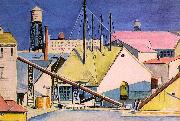 |
Dickinson, Preston
|
|
American Precisionist Painter, 1891-1930
American painter, b. New York City. In New York he studied at the Art Students League. From 1910 to 1915 he traveled in Europe, returning often later in life. His still lifes and landscapes in oil and watercolor are built up of highly colorful planes.
|
|
|
|
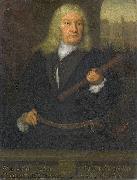 |
David van der Plas
|
|
David van der Plas (1647-1704), was a Dutch Golden Age portrait painter.
David van der Plas became famous as a portrait painter, and his most illustrious patron was Cornelis Tromp. In 1684 he married Cornelia van der Gon of Haarlem, the daughter of the castellan (kastelein) of the Oude Doelen, the meeting quarters of the Haarlem schutterij (the building currently houses the Stadsbibliotheek Haarlem). David van der Plas' brother-in-law was the painter Govert van der Leeuw and his pupil was Jacob Appel.
His wife Cornelia van der Gon was the rich heiress of the Amsterdam architect Adriaan Dortsman (ca. 1636-1682), who designed the round Lutheran church on the Singel. The marriage was childless, and Cornelia spent her time on her doll houses, which Dortsman had helped design and which Van der Plas helped decorate. The landscape painter Jan Wijnants also painted miniatures for these doll houses. Cornelia died in 1701, and after the death of Van der Plas, the doll houses were sold at auction to Sara Rothe, who used them to decorate her own doll houses.
|
|
 |
CUYP, Aelbert
|
|
Dutch Baroque Era Painter, 1620-1691
Painter and draughtsman, son of (1) Jacob Cuyp. One of the most important landscape painters of 17th-century Netherlands, he combined a wide range of sources and influences, most notably in the application of lighting effects derived from Italianate painting to typical Dutch subjects. Such traditional themes as townscapes, winter scenes, cattle pieces and equestrian portraits were stylistically transformed and given new grandeur. Aelbert was virtually unknown outside his native town, and his influence in the 17th century was negligible.
|
|
|
|
 |
CORNELIUS, Peter
|
|
1824-1874,German composer. Trained as actor and violinist, and friend of artists, poets and writers, he devoted himself to music from the 1840s, finding inspiration in Liszt and the New German School at Weimar in 1852. His first mature works were the lieder opp. 1 and 2 and the song cycle Trauer und Trost op.3, followed by the comic opera Der Barbier von Bagdad (1855-8); all show his literary skill, refreshing simplicity and musical independence from the Liszt circle. In Vienna (1859-65), he wrote his second opera Der Cid and enjoyed fruitful relationships with Brahms, Carl Tausig and above all Wagner, who summoned him to Munich in 1865 as his private repetiteur and teacher at the Royal School of Music. His third opera Gunlöd was never finished. He continued to write poetry and essays defending Wagner and Liszt and translated vocal works by Pergolesi, Berlioz, Liszt and others. Although he revered Wagner, he stood ethically and artistically apart, his work (especially Der Barbier) thus representing an original achievement.
|
|
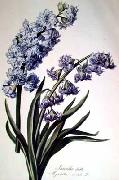 |
Cornelis van Spaendonck Prints
|
|
Dutch 1756-1840
Cornelis van Spaendonck (7 December 1756 - 22 December 1839) was a Dutch painter who was a native of Tilburg. Spaendonck initially worked under artist Guillaume-Jacques Herreyns (1743-1827) in Antwerp, and in 1773 moved to Paris to study and work with his brother, floral painter G??rard van Spaendonck (1746-1822). From 1785 to 1800, Cornelis van Spaendonck was head of the porcelain works at S??vres. Due to difficulties encountered as an administrator, he was relieved of his directorship in 1800, but remained at S??vres as a designer and artist until 1808.
In 1789 Spaendonck became a member of the Acad??mie des Beaux Arts. He painted throughout his lifetime, and displayed his works at the Salons of Paris until 1833. Most of Spaendonck's works were created with oils and gouache, and he is remembered for his lush still-lifes of flowers. Among his paintings were subjects such as De Fleurs Et Fruits, Vase De Fleurs, Bouquet De Different Fleurs, Fleurs Du Jardin, Corbeille Fleurs, et al. At his death in 1840 there were 29 paintings in his studio, which were auctioned soon afterwards.
|
|
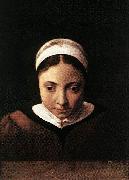 |
Cornelis van Poelenburch
|
|
(1594 - 12 August 1667) was a Dutch Golden Age landscape painter.
Though his birthplace is unknown, a signed document survives in Utrecht where he is listed as six years old and the son of Simon van Poelenburch, a Catholic canon in Utrecht.He initially trained with Abraham Bloemaert, and his earliest signed paintings are from 1620.He traveled to Rome where he was influenced by Adam Elsheimer and became a founding member of the Bentvueghels. He counted a few cardinals under his patrons, and was called to England by Charles I of England, for whom he made small cabinet pieces. He returned to Utrecht where he later died just a few years after his old teacher Abraham Bloemaert.He painted mostly small landcapes with mythical or religious figures or passages, in a style that would later be evident in some of the works of Claude Lorraine.
His "most important and successful" pupils were Daniël Vertangen, Dirck van der Lisse, François Verwilt, and Jan van Haensbergen. Arnold Houbraken claimed that his best pupil was Joan vander Lis from Breda (not Dirk vander Lis from The Hague). Houbraken then mentioned Vertangen, Verwilt, Warnard van Rysen from Bommel, and Willem van Steenree, a nephew. The RKD also mentions Laurens Barata.
|
|
 |
Columbano Bordalo Pinheiro
|
|
(Lisbon, 21 November 1857 - Lisbon, 6 November 1929), who is usually referred to as Columbano, was a Portuguese Realist painter. Usually considered the greatest Portuguese painter of the 19th century, he has been compared to the likes of Wilhelm Leibl and Thomas Eakins.
Columbano was the son of a mediocre romantic painter, Manuel Maria Bordalo Pinheiro, and the younger brother of the great caricaturist, Rafael Bordalo Pinheiro. He became the leading painter of his generation and the master of realism in Portuguese painting, specializing in portraiture. He was disciple of his father, of the painter Miguel Ângelo Lupi and the sculptor Simões de Almeida. After attempting twice for a bursar to study abroad finally in 1881 the countess of Edla, second wife of D.Fernando would finance his study in France. There he studied the work of French naturalist, realist and impressionist painters, like Courbet, Manet and Degas without losing his distinctive style which is often gloomy and intimist. He joined the "Grupo do Leão" (The Lion's Group), a usual meeting of artists, writers and intellectuals in a Lisbon downtown restaurant called "Leão de Ouro" (The Golden Lion) in order to discuss aesthetic issues and proclaim Naturalism against the academic art of the time. The group also included Rafael Bordalo Pinheiro, Antenio da Silva Porto, Marques de Oliveira and Jose Malhoa. He painted portraits of some of the greatest names of Portuguese society and culture of his time like Jose Maria de Eça de Queiroz, Teefilo Braga, Raul Brandão and had great psychological accuracy in defining the personality of those depicted. His most famous portrait was that of the poet Antero de Quental in 1889. In this haunting work Columbano seems to have anticipated Antero's suicide.
Columbano was a well known Republican, so it wasn't surprising that after the Republic proclamation, in 1910, he was invited to design the flag of the new regime and was nominated director of the National Museum of Contemporary Art, currently the Chiado Museum, in Lisbon, of which he was in charge from 1914 to 1927. The best collection of his paintings is in the Chiado Museum, in Lisbon. He's also represented in some of the finest Portuguese museums, like the National Museum Soares dos Reis, in Porto.
|
|
 |
COECKE VAN AELST, Pieter
|
|
Flemish Northern Renaissance Painter, ca.1502-1550
South Netherlandish painter, architect, and linguist. After extensive travels he settled in Antwerp, where he published (1539) a Flemish translation of Vitru-vius's De Architectura and (1539?C53) Serlio's multi-volume treatise into Flemish, French, and High German.
|
|
 |
CODDE, Pieter
|
|
Dutch Baroque Era Painter, 1599-1678
Dutch painter and poet. Frans Hals was once thought to have been his teacher, but there is no evidence for this. It is possible that Codde studied with a portrait painter, perhaps Barent van Someren (1572/3-1632) or Cornelis van der Voort (1576-1624), since most of his earliest works, from the period 1623-7, seem to be portraits. His earliest known dated work is the Portrait of a Young Man (1626; Oxford, Ashmolean), which precedes by a year his earliest dated genre piece, the Dancing Lesson (1627; Paris, Louvre). He was particularly productive in the 1620s and 1630s, painting mainly interior genre scenes. After the mid-1640s only portraits and a few history paintings, such as the Adoration of the Shepherds
|
|
|
|
 |
Clara Peeters
|
|
Clara Peeters (1594 - c. 1657) was a Flemish painter noted for painting still lifes, particularly of breakfast scenes and florals.
Few details of her life are known. She was baptized in Antwerp in 1594, and married there in 1639. She is known to have lived in Amsterdam and The Hague. Her first known work was dated 1608, when she was 14. The quality of this work reveals a master teacher, and scholars believe she was influenced by Osias Beert. He was probably also an influence on the flower paintings of her contemporary, Catarina Ykens I (1608/1618 - 1666/1685), who was the wife of Frans Ykens, a pupil of Beert's. Clara Peeters's last painting was dated 1657, and is now lost. The circumstances of her death are unknown.
|
|
 |
CLAESZ, Pieter
|
|
Dutch Baroque Era Painter, ca.1597-1660
Dutch painter of German birth. He apparently spent his entire career in Haarlem, where he specialized in still-life paintings. Well over 100 works survive, dating from 1621 to 1660. Most of his pictures are dated and monogrammed PC. Since those initials were shared by the Antwerp still-life painter CLARA PEETERS
|
|
|
|
|
|
|
|
|
|
|
|
|
|
|
|
|
| Wholesale China Oil Painting Wholesale Oil Painting China Xiamen Portrait Reproduction on canvas Chinese Oil Painting Wholesale USA Oil Painting |
|
|
|
|
|